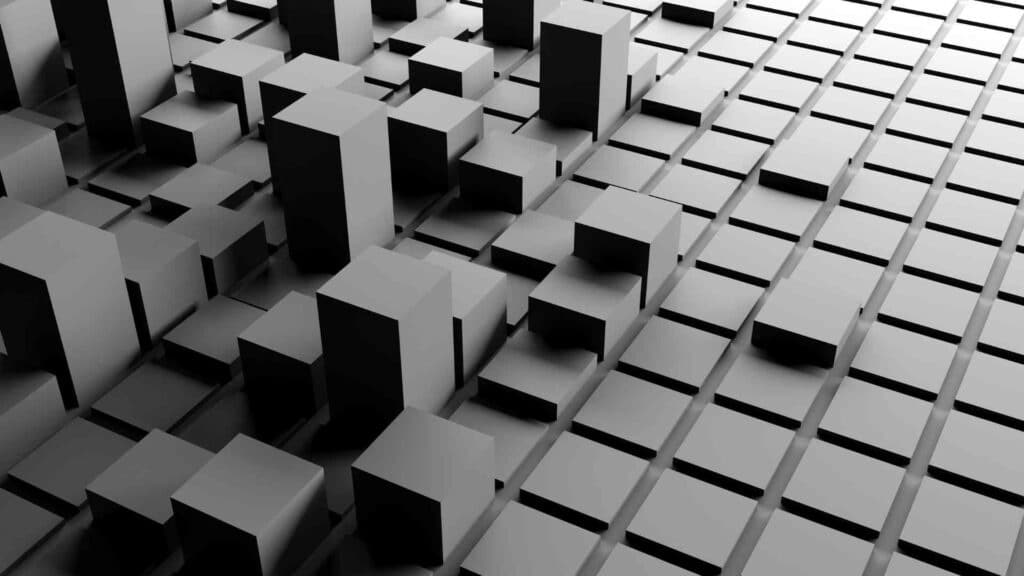How good are you at rotating objects in your mind, judging distances and imagining things in 3D? This is what spatial thinking is all about, and believe it or not, spatial awareness often accompanies us subconsciously in everyday life. Our brain automatically uses empirical values to classify distances, heights and quantities, e.g. B. when parking, packing suitcases or assembling furniture.
Against this background, it is not surprising that spatial and visual thinking is tested in the recruitment test or aptitude test. And the graphic tasks for spatial thinking are usually difficult and present many applicants with a great challenge. Because in this part of the test it is not about your knowledge, but about your spatial imagination and how well you can think abstractly.
Test your spatial thinking online here!
With the spatial thinking test you can train your imagination and visual thinking and practice for your aptitude test!
What to expect in the spatial thinking test?
The usefulness of spatial thinking may seem rather abstract when you first think about it – but in many professions the skills of visual thinking are a basic requirement and indispensable to be successful. For example, as a surveyor, technical draftsman, designer, architect or mechanical engineer, you need to have a particularly good imagination. But spatial imagination and a trained eye are just as important in jobs in the advertising industry and gaming as in jobs as model builders, draftsmen, painters and varnishers, etc.
It is also not surprising that in most application procedures, the spatial thinking of the candidates is also checked. As a rule, the tasks in the spatial thinking test are divided into two categories: three-dimensional (spatial perception) and two-dimensional (surfaces and shapes). In addition to spatial and abstract thinking, you also need good imagination in order to complete the tasks as error-free as possible.
These tasks will test your spatial thinking
Spatial thinking ability refers to seeing and thinking in three dimensions in the imagination. For example, can you mentally imagine what an object looks like if you look at it from a different perspective? Which body results from a folding template? Do you recognize reflections straight away or can you correctly assess relations and proportions? All of these are typical tasks in the spatial thinking test and require abstract imagination.
These are mostly visual test tasks made up of easy-to-understand drawings or simple sketches. The 2D or 3D graphics are used to determine whether you are able to understand and analyze three-dimensional objects in your imagination. So it depends on a good imagination and whether you have a keen eye for detail.
Folding templates
Technical understanding and the gift of spatial imagination are required in folding tasks. You see an object in front of you in an unfolded form and your task is to recognize the shape of the folding template when all sides are correctly positioned, i.e. folded. This starts with the punched-out template for a pizza box, perforated at the fold edges, and can lead to really complicated geometric figures.
Flip and rotate figures
When we shoot characters, they often look different at first glance, even though the outline is the same. You solve such mirror image tasks by isolating the one from a series of apparently identical shapes that only corresponds to the original figure when mirrored. Sounds complicated? With our exercises on spatial thinking, it will be easier for you to identify the faulty reflection in real exam situations.
Count surfaces
Counting the surfaces of more or less familiar bodies or objects is a popular task in the visual reasoning test. As the name suggests, this task is about counting the outer surfaces of bodies. Specifically, a test question could be like that: For example, the letter E is given in three-dimensional form E. How many surfaces does this body consist of? The correct answer would be 14.
Assemble figures
When assembling figures, mostly geometric shapes are broken up into fragments. It’s your job to figure out what shape the pieces put together make. Is it a square or is it a trapezoid? Initially, these figures usually appear very complicated. In our free practice test, however, we have put together a whole series of spatial thinking tasks for you to practice on.
Dice tasks and dice nets
Dice tasks in recruitment tests are diverse and absolute classics when it comes to testing applicants’ spatial imagination. There are different forms of the dice test, but mostly you have to turn and tilt a dice mentally or you have to construct a specific dice from a dice grid.
Turn and rotate cubes
Here you can see several cubes that look the same at first glance. On closer inspection, however, one notices that the dice are arranged differently. Depending on the task, you have to turn or rotate the cube to find out which two cubes are identical or which one differs from all the others.
Fold and recognize cubes
Here you can see a cube and its surface with six mixed squares that z. B. differ in color or contain patterns and symbols. You should now find out which of the given cubes can be folded exactly to those faces with the corresponding arrangement. This task can also occur as a reverse variant: you see a complete cube and various unfolded variants next to it. Which “folding plan” fits the original? The last question can also be placed in another subcategory of the spatial reasoning test, for example in the folding templates section. Don’t get confused: With the right preparation, such tasks can even become a pleasure.
Tips for training spatial thinking
Of course there are natural talents for whom spatial imagination is a piece of cake. But it’s not like that for everyone – on the contrary. Many people have an aversion to this type of task because it seems too complex. And that’s exactly where we want to start. As with many other aptitude test requirements, you can enhance your three-dimensional senses. We have put together an extensive selection of different spatial thinking exercises in our aptitude test online trainer, that prepare you optimally for your spatial thinking test in the selection process.




